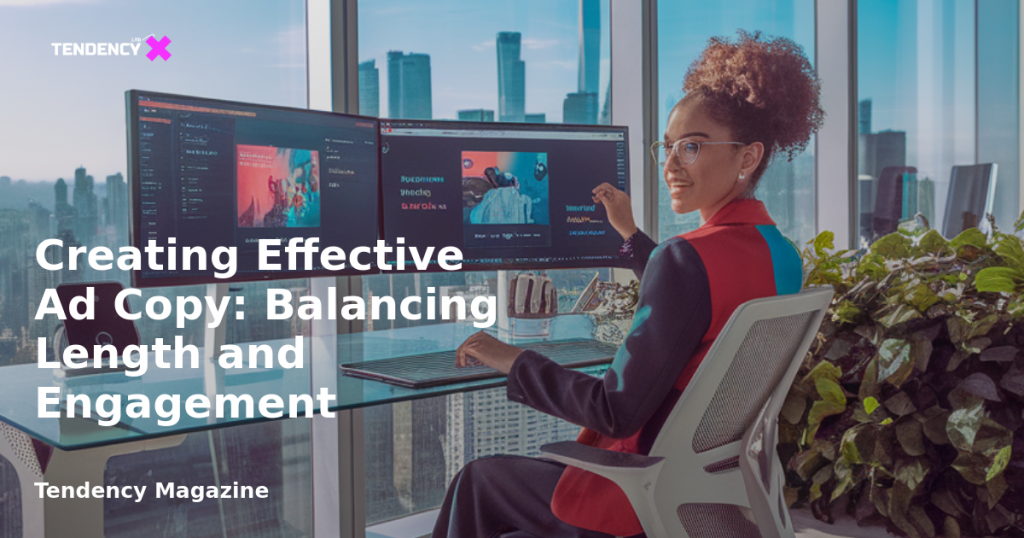Creating Effective Ad Copy: Balancing Length and Engagement

Introduction
In the world of digital advertising, crafting the perfect ad copy is both an art and a science. The length of your ad copy can significantly impact its effectiveness, but finding the right balance between brevity and engagement can be challenging. While some experts advocate for short, punchy messages, others suggest that longer copy can provide more context and drive deeper engagement. So, how do you determine the optimal length for your ad copy? Let’s explore some key recommendations and strategies to help you create compelling ad content that resonates with your audience.
1. Understanding Meta’s Recommendations
2. The Importance of the First 125 Characters
3. Exploring Text Variations
4. The Role of Audience and Platform
5. Crafting Engaging Hooks and CTAs
6. Testing and Optimizing Ad Copy
7. Conclusion
Understanding Meta’s Recommendations
Meta, the parent company of Facebook, provides specific guidelines for ad copy length to ensure ads are both effective and visually appealing. According to Meta, ad copy should ideally be concise, with the primary text limited to 1-3 lines. This recommendation is based on the notion that shorter text is more likely to capture attention quickly in a fast-paced digital environment.
Additionally, Meta suggests that text in ads may be truncated if it exceeds certain character limits. For most placements, the recommended text length for the primary text field is 125 characters. This guideline is crucial for ensuring that the most important part of your message is visible to users without requiring them to click “See More.”
The Importance of the First 125 Characters
Given the potential for text truncation, it’s essential to prioritize the most critical elements of your message within the first 125 characters. This means crafting an engaging hook or a compelling call-to-action (CTA) that immediately captures the reader’s attention. The initial lines of your ad copy should convey the core message or value proposition clearly and succinctly.
However, while it’s important to adhere to these guidelines, it’s equally vital to remember that the character limit is not an absolute rule. If your message requires more context or detail, don’t be afraid to use additional characters, provided that the initial lines remain impactful.
Exploring Text Variations
One effective strategy for optimizing ad copy is to provide multiple text variations. Meta allows advertisers to create up to five primary text variations for a single ad. This flexibility enables you to experiment with different lengths and styles, such as short, medium, and long-form copy.
By offering a range of variations, you can let Meta’s algorithm determine which version performs best with your target audience. This approach not only enhances the chances of success but also provides valuable insights into what resonates most with your audience.
The Role of Audience and Platform
When determining the ideal length for your ad copy, consider the preferences and behaviors of your target audience. Different demographics may respond differently to varying lengths of copy. For instance, younger audiences might prefer concise, visually-driven messages, while older audiences might appreciate more detailed information.
Additionally, the platform on which your ad will appear plays a significant role. Social media platforms like Instagram and Facebook are typically better suited for shorter, more visual content, while platforms like LinkedIn might accommodate longer, more informative copy.
Crafting Engaging Hooks and CTAs
Regardless of the length, every piece of ad copy should include an engaging hook and a strong CTA. The hook is what grabs attention, while the CTA guides the audience towards the desired action. Ensure that these elements are clear, compelling, and aligned with your overall campaign goals.
For shorter ads, focus on a single, powerful message or offer. For longer ads, you have the opportunity to tell a more detailed story, address potential objections, and provide additional context.
Testing and Optimizing Ad Copy
Continuous testing and optimization are crucial for creating effective ad copy. Utilize A/B testing to compare different versions of your ad and analyze performance metrics such as click-through rates, conversions, and engagement levels. Use these insights to refine your copy and improve future campaigns.
Remember, what works for one campaign might not work for another, so be prepared to adapt your strategy based on data and feedback.
Conclusion
Creating effective ad copy is about striking the right balance between length and engagement. While Meta’s guidelines provide a useful starting point, it’s essential to tailor your approach to the specific needs of your audience and platform. By experimenting with different text variations, crafting compelling hooks and CTAs, and continuously testing and optimizing your ads, you can create powerful ad content that drives results. Keep in mind that there are no one-size-fits-all rules; flexibility and adaptability are key to success in the dynamic world of digital advertising.

